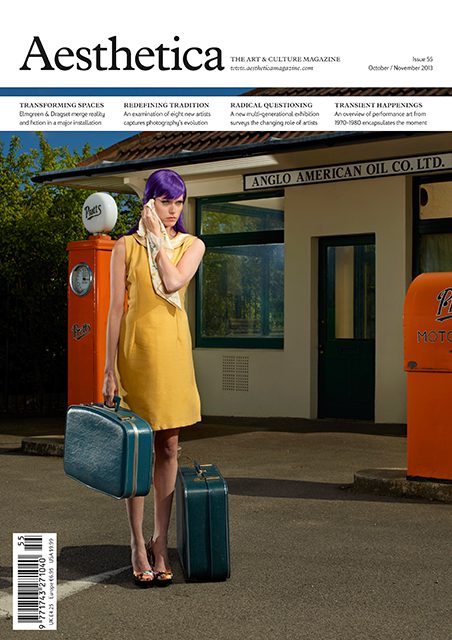Aesthetica Magazine Issue 55
October / November 2013
This issue concentrates on redefinitions as a way of constructing new meaning. The artists featured expand across decades of contemporary practice, and the works included test the resilience of the artist. Inside we start with a look at Elmgreen & Dragset’s latest installation Tomorrow, which takes over the former Textile Galleries at the V&A, London. The artists have created an apartment belonging to a fictional, elderly and disillusioned architect to comment on the loneliness and alienation ever-present in today’s society.
MoMA’s New Photography 2013 exhibition surveys the works of eight key emerging photographers. 9 Artists, meanwhile, opens this autumn and strips back the concept of a group show. Rituals of Rented Island opens at the Whitney, presenting a major historical overview of performance art from 1970-1980. In photography, we look at Argentinian photographer Alejandro Chaskielberg’s Suriname Bittersweet series, currently on display at Noorderlicht Photofestival. Known for creating images that balance precariously between documentary and staged photography, Philip-Lorca diCorcia’s East of Eden series opens at David Zwirner, London. We also display a series from Chilean photographer Sergio Larrain, which explores the artist’s wanderlust through the 1950s and 1960s. Finally, we introduce the works of Eleonora Ronconi and our cover photographer Julia Fullerton-Batten.
In film, we chat with John Roberts about his new film Day of the Flowers, which is set against the backdrop of present-day Cuba, exploring family relationships and unspoken expectations. We also speak with Jeremy Lovering about his debut theatrical release, In Fear, which presents a complex study of the emotion. In music, we look at how multinational corporations are weaving their way into the industry through sponsorship deals. On stage, the Lyric presents a new kind of theatricality, Secret Theatre, which challenges the definitions of performance. Finally, Saudi Arabia’s leading artist, Abdulnasser Gharem, discusses his complex conceptual works and working as an artist in the Middle East.


